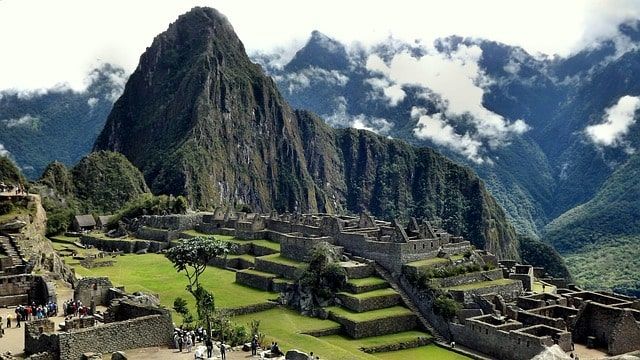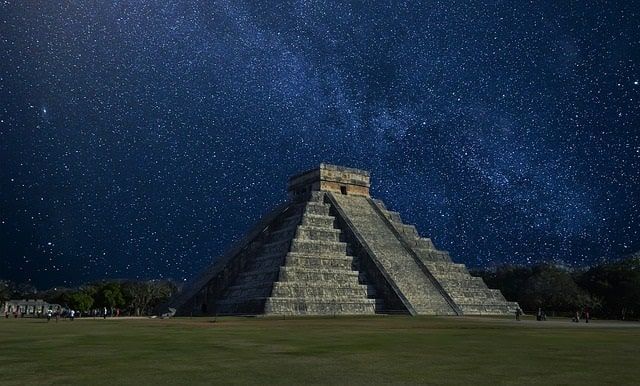Curious facts about the three wonders of the world in Latin America
The list of the wonders of the world includes Machu Picchu, in Cuzco, Peru, Chichen Itza, in the Yucatan Peninsula, Mexico, and the statue of Christ the Redeemer, in Rio de Janeiro, Brazil.

The list of the new seven wonders of the modern world includes Machu Picchu, in Cuzco, Peru; Chichén Itzá, in the Yucatán Peninsula, Mexico; the Coliseum of Rome, in Italy; the statue of Christ the Redeemer, in Rio de Janeiro, Brazil; the Great Wall of China; Petra, in Jordan; and the Taj Mahal, in Agra, India.
Machu Picchu, Cuzco, Peru
The Inca city was built in silo XV and is considered a masterpiece of architecture and engineering. It was built with a technique of assembling dry stone, called ashlar masonry, which consists of superposing the ashlars without mortar, mortar, or cement that unites them.
It is assumed that it was Hiram Bingham, from Yale University, who discovered the ruins in 1911. However, they were already known by some local families. Nine years before the arrival of Hiram Bingham to Machu Picchu, the Peruvian farmer Agustín Lizárraga visited the Inca Citadel. In the place, he left his name written as proof of his visit. There are another ten people who claim to be the pioneers in Machu Picchu.
Studies indicate that there are around 200 structures in Machu Picchu, however, it is only a small part of the city, because 60% of the site is below the surface. It is composed of underground channels and drainage systems. Until recently there was a family that claimed Machu Picchu as their property. Only in April 2019, the lawsuit was declared unfounded by the justice of Peru. Machu Picchu is the most visited place in Peru. For the amount of those who wish to visit the site, Unesco had to establish a limit of visitors per day to conserve the Inca Citadel in the face of excessive tourist traffic.
Chichen Itza, Yucatan Peninsula, Mexico
The name of Chichén Itzá derives from the Mayan words and means 'mouth of the water sorcerer's well' which refers to the Sacred Cenote, the great natural well that was considered one of the main entrances to the underworld

Under the iconic Kukulkan temple, another pyramid dating from 500 AD to 800 AD was found. In turn, this pyramid was built on a body of water or cenote, a sacred place for the ancient Maya. The orientation of the Kukulkan temple allows observing each equinox the phenomenon of the descent of the feathered serpent, the prehispanic deity. It is a solar projection consisting of seven isosceles triangles of light inverted as a result of the shadow projected by the nine platforms of that building during sunset. As time progresses, a serpent appears to descend from the temple and the last redoubt of light is projected onto the head of the feathered serpent at the base of the stairway.
The Ball Game of Chichén Itzá is the largest in Mesoamerica, it is 70 meters wide, 169 meters long, and 8 meters high. In general, at Chichén Itzá, 13 ball games were discovered. It is the second archaeological zone most visited by tourists in Mexico, after Teotihuacán. To keep the place in 2006 they forbade climbing the Kukulkan pyramid, the most emblematic of the site.
The statue of Christ the Redeemer, Rio de Janeiro, Brazil
At the time of the construction of the statue, Brazil did not have enough qualified specialists to carry out the work. That's why it was built in France and sent to Brazil in hundreds of parts, only the head consisted of 50 fragments. The statue was mounted in the opposite direction, that is, from head to toe.

The left arm of Christ the Redeemer is forty centimeters smaller than the right. It is not an error, it is a deliberate construction. The arms were designed as a boat sail, in this way, they can withstand winds of up to 150 kilometers per hour. The statue has a height of 38 meters and is located about 710 meters above sea level. As it is the highest point of the district, it is regularly targeted by lightning (on average, four times a year). That is why the representatives of the Church have a reserve of the stone from which the statue was made
The whole statue of Christ the Redeemer of Rio de Janeiro is hollow, except for the hands. Inside there are stairs that lead to the top. However, to enter you must obtain permission from the archdiocese. The assembly work required more than 1,000 tons of concrete. The shape of the statue, with the arms extended to the emptiness, required great skill and entailed great dangers. Despite all the difficulties, not one person died during the construction.




